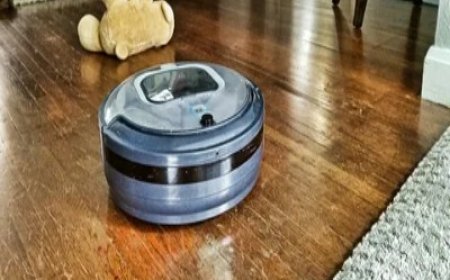How Climate Impacts Pest Activity in Arlington, Texas
Arlington, Texas, located between Dallas and Fort Worth, is known for its warm climate, vibrant culture, and rapidly growing population. However, what many residents may not consider is how the regions unique climate directly affects pest activity. With hot summers, mild winters, and occasional heavy rainfall, Arlington provides an ideal environment for a wide range of pests to thrive. Understanding how local weather patterns influence pest behavior is crucial for homeowners and businesses alike. For anyone dealing with pest issues year-round, professionalpest control Arlington Texasservices offer effective and climate-conscious solutions.
Lets explore how the various elements of Arlingtons climate shape pest activity and what you can do to stay protected.
The Climate of Arlington: A Pest Paradise
Arlington falls under a humid subtropical climate zone, characterized by long, hot summers and short, mild winters. Annual precipitation averages around 38 inches, with May being the wettest month. This combination of heat and humidity creates the perfect breeding ground for many pests, including mosquitoes, termites, cockroaches, ants, and rodents.
Warm temperatures accelerate insect lifecycles, meaning more generations are born each season. Meanwhile, high humidity supports mold and organic matter growth, attracting pests that feed on decaying materials.
Hot Summers and Increased Insect Activity
Mosquitoes Thrive in Heat and Moisture
Summer in Arlington typically sees temperatures soar into the 90s and beyond, making it ideal for mosquitoes. These pests require standing water to reproduce, and rain combined with lawn sprinklers or clogged gutters often creates abundant breeding sites. Additionally, mosquitoes become more active as temperatures rise, with peak biting times occurring at dawn and dusk.
Because mosquito populations can explode in summer, its vital to monitor your yard for standing water and use repellents. If DIY efforts arent enough, turning to a reliablePest Controlservice can help you manage outbreaks more effectively.
Termites: Silent Destroyers in Warm Climates
Termites are a year-round threat in Texas, but their activity peaks during the warmer months. In Arlington, termite swarms often occur in spring and summer. These swarms signal the beginning of new colonies, which can quietly destroy the wooden structures of your home from the inside out. The warmth of Arlington's summer accelerates their reproduction and wood-damaging behavior.
Mild Winters Mean Year-Round Pest Pressure
Unlike northern regions where cold winters naturally curb pest populations, Arlingtons mild winters offer little relief. While some pests may slow down during cooler months, many remain active indoors, where heating systems provide comfortable environments.
Rodents Seek Shelter Indoors
Rats and mice often move indoors during the winter in search of food, warmth, and shelter. Arlingtons mild winter allows them to remain active both indoors and out. Rodents can squeeze through small openings and reproduce quickly, posing risks to food safety and structural integrity.
Cockroaches Love Indoor Heat
Cockroaches, particularly the American and German varieties, are well-adapted to Arlingtons climate. Even in winter, they find refuge in warm kitchens, bathrooms, and basements. Because they can carry disease and contaminate food, early identification and treatment are essential.
Rainfall and Moisture-Dependent Pests
Rainfall plays a key role in influencing pest activity in Arlington. While some months are relatively dry, others see frequent and sometimes heavy storms, especially in the spring and early summer.
Ant Infestations After Rain
After a rainstorm, ants often enter homes seeking dry ground. Species such as carpenter ants and fire ants can be especially aggressive. Carpenter ants are particularly damaging because they nest in damp wood and can compromise the integrity of your home over time.
Flooding Drives Pests Indoors
Heavy rain can flood nests and underground habitats, driving pests like spiders, centipedes, and even snakes indoors. If your home isnt well-sealed, these unwelcome guests may find their way inside quickly.
Spring and Fall: Transition Seasons Bring New Pest Challenges
The change in temperature during spring and fall also affects pest behavior.
Spring Awakening
In spring, the rising temperatures and increased rainfall wake many dormant pests. Mosquitoes hatch, termites swarm, and ant colonies become more active. Spring is often when homeowners first notice signs of infestation, making it a good time to schedule an inspection.
Fall Invasions
As temperatures drop in fall, pests begin preparing for winter. Spiders spin webs indoors, wasps search for warmer nesting areas, and rodents ramp up their efforts to enter homes. Preventive measures in the fall can help reduce the number of indoor pests during winter.
Humidity Levels and Pest Proliferation
Arlingtons climate is not just warmits also humid. High humidity supports mold growth and decaying organic material, which attracts pests like silverfish, earwigs, and millipedes.
Mold-Loving Insects
Insects such as silverfish thrive in moist environments. Bathrooms, laundry rooms, and basements often offer the perfect conditions for these pests. Dehumidifiers and proper ventilation can help control moisture levels, reducing their presence.
Urbanization and Climate Working Together
Arlingtons expanding urban footprint also contributes to pest activity. As natural habitats are displaced by development, pests like raccoons, opossums, and rodents adapt to city life. Combined with a climate that supports year-round activity, urbanization amplifies pest problems in homes and businesses alike.
Climate Change: Making Matters Worse?
Climate change may further intensify pest issues in Arlington. Warmer average temperatures and more extreme weather events could extend pest breeding seasons and push some species into new areas. For example:
-
Longer mosquito seasons could increase the spread of West Nile virus and other diseases.
-
More frequent floods might force more pests into homes.
-
Drier summers could stress plants and attract sap-feeding pests like aphids.
Staying ahead of these emerging trends requires vigilance and a willingness to adapt pest control methods accordingly.
Preventative Measures for Year-Round Protection
Given the year-round pest pressure in Arlington, prevention is key. Here are several steps homeowners can take to minimize risk:
-
Seal cracks and gaps in walls, doors, and windows.
-
Keep gutters clean to prevent water buildup.
-
Store food properly and clean up crumbs or spills promptly.
-
Use dehumidifiers in basements and bathrooms to reduce moisture.
-
Trim vegetation around your homes exterior to eliminate hiding spots.
For comprehensive and long-lasting protection, partnering with a local pest management expert is highly recommended. Professional technicians understand how Arlingtons climate impacts pests and can tailor their services to seasonal threats.
Conclusion: Dont Let Climate-Controlled Pests Take Over
The relationship between Arlingtons climate and pest activity is clear. Warm, humid summers, mild winters, and seasonal rainfalls all contribute to a thriving pest population. Whether its mosquitoes in the summer, rodents in the winter, or termites in the spring, residents must remain vigilant year-round.
Understanding how pests respond to weather changes is only the first step. The next is ensuring your home is protected with both preventative actions and professional support. By working with experts in pest control Arlington Texas, you can safeguard your property from the many challenges that Arlingtons climate presents.










































